Choosing a Bolt Carrier Group (BCG) for your build can get a bit confusing with so many options and variations of material and coating available. We’ll make it easier for you by breaking down the top types of BCG’s here, giving you an idea of what to look for.
Bolt Carrier Group Components
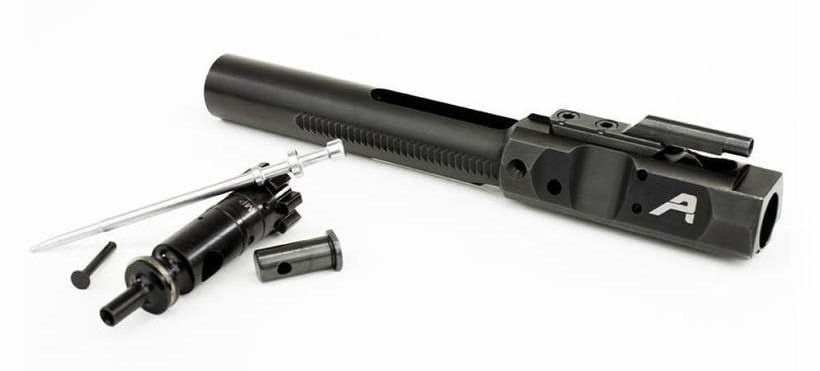
Here’s a breakdown on the major components that make up a Bolt Carrier Group:
- Carrier. This is the external housing for the bolt and is attached to the gas key. It’s important to clean and check it regularly to ensure that the screws attaching it to the gas key do not come loose.
- Bolt. The bolt helps guide the round into the chamber, extracts the spent case, then ejects the spent cartridge once you’ve fired the gun.
- Gas key. Also called the “bolt carrier key”, this essential part funnels gas from the gas tube into the bolt carrier. It should be tight and staked to create a seal. Proper staking keeps screws from backing out.
- Firing pin. A firing pin is a component that strikes the primer of a cartridge, causing the gun to detonate.
- Cam Pin. The Cam Pin keeps the bolt inside the bolt carrier and keeps it in line, it keeps the firing pin in line, it “cams” the bolt into the locked position as the BCG finishes its forward movement into battery, and it provides many more functions that are crucial to the operation of the firearm.
Types
M16 Full-Auto Bolt Carrier Groups
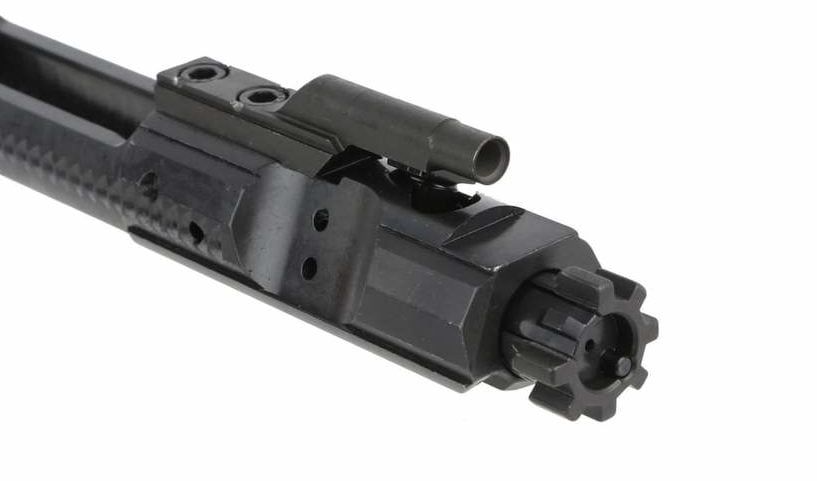
You’ll find that there are a variety of quality M16 full auto bolt carrier groups on the market. Full auto BCG’s have grown immensely in popularity over the years, and could probably be considered the standard carrier these days. While this is a full-auto part, it is perfectly legal to own and use in your build.
AR-15 Semi-auto BCG’s also exist, but they have less material on the back of the carrier. The “extra” material (more specifically, an additional lug) on M16 BCG’s allows them to be compatible with a full auto sear. M16 BCG’s weigh a bit more than Semi-Auto BCG’s, but this extra weight may help your rifle cycle more smoothly.
Mil-Spec Bolt Carrier Groups
A Mil-spec BCG generally means that it was built to meet military specifications. For example, the ODIN Works AR-15 Black Nitride Bolt Carrier Group 5.56/.223/.300BLK uses true Mil-Spec dimensions and fits AR-15/M4 compatible style Rifles (i.e.) .223/5.56mm, .300 Blackout.
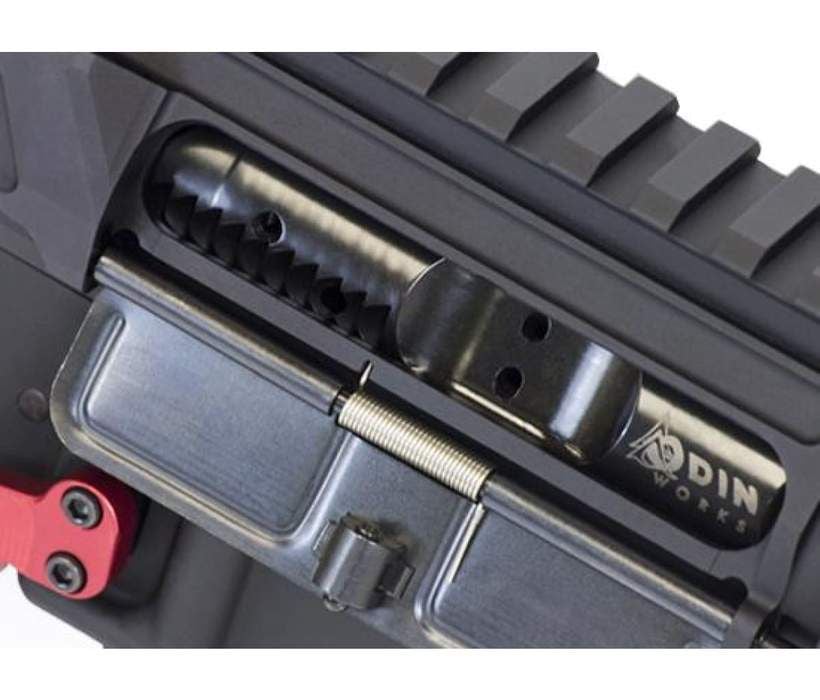
The ODIN Works 6.5 Grendel Type 2 Black Nitride Bolt Carrier Group is also considered a true Mil-Spec bolt carrier group and is manufactured for Type 2 6.5 Grendel rifles.
Materials
Steel Bolt Carrier Groups
Steel is the most common material used for bolt carrier groups because it is durable, heat resistant, and withstands wear and tear well. As an added bonus, it’s not too expensive.
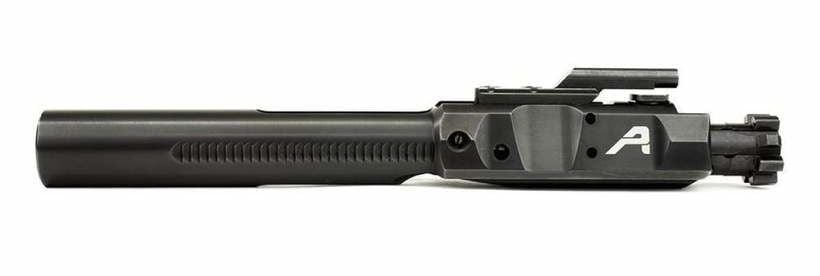
Different types of steel are used for different BCG components. For example, you can get a Billet carrier machined from 8620 steel, a gas key made from 4130 steel, and a firing pin manufactured from 8740 steel in one bolt carrier group, as is the case with Aero Precision’s .308/7.62 bolt carrier group. The correct steel grade for one component may not be best for another. For example, carriers are often made from 8620 steel, but this type is too weak to be used for a bolt.
Steel BCG’s are perfectly suitable for many AR-15 enthusiasts, and it’s also commonly used by military and law enforcement.
Aluminum Bolt Carrier Groups
Aluminum is a lighter material often used for low mass bolt carrier groups. It is fairly strong but may not last as long as steel. Aluminum BCG’s tend to be popular for shooting competitions and work well with guns that have adjustable gas systems.
Titanium Bolt Carrier Groups
Titanium BCG’s are lighter than steel, but are much stronger. Titanium is incredibly heat and pressure resistant, but considerably more expensive than steel.
Bolt Carrier Finishes
Parkerized (Manganese Phosphate)
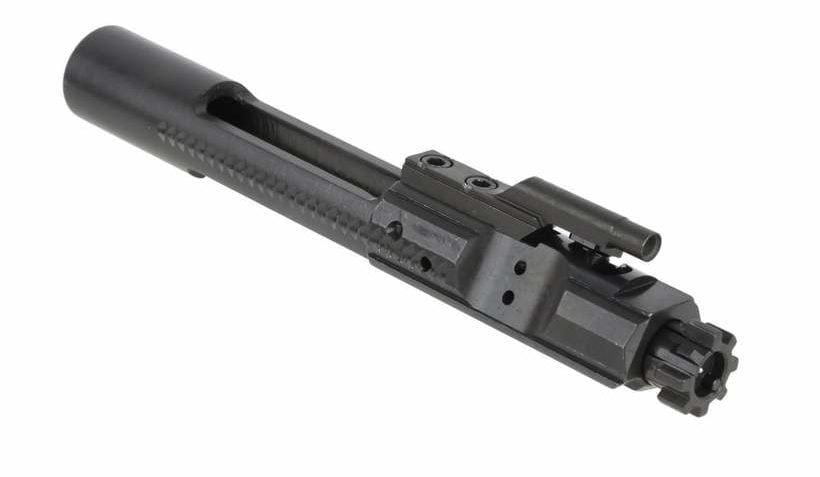
This type of coating is considered Mil-Spec and is probably the most common coating you’ll find. It’s durable and highly resistant to corrosion. It tends to be one of the most economical bolt finishing choices.
Nickel Boron Coated
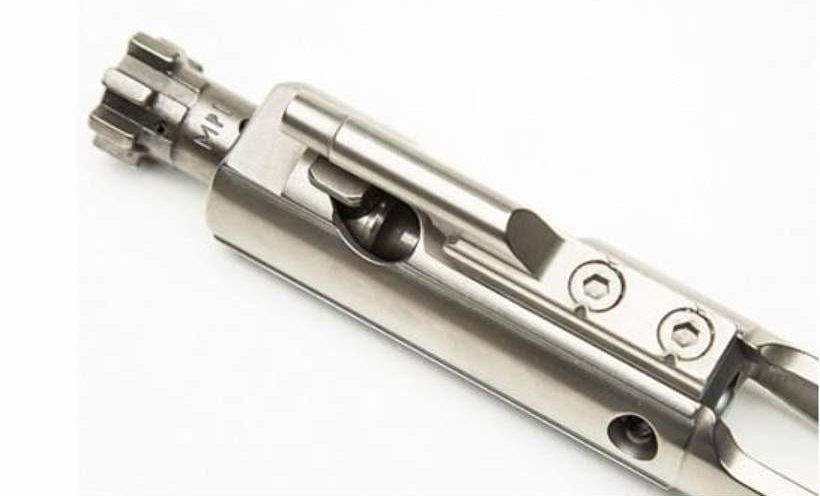
Nickel boron has the advantage of being extremely corrosion resistant and nearly friction-free. It’s easy to clean, operates smoothly and can be cleaned simply by wiping it down with a soft rag.
Black Nitride
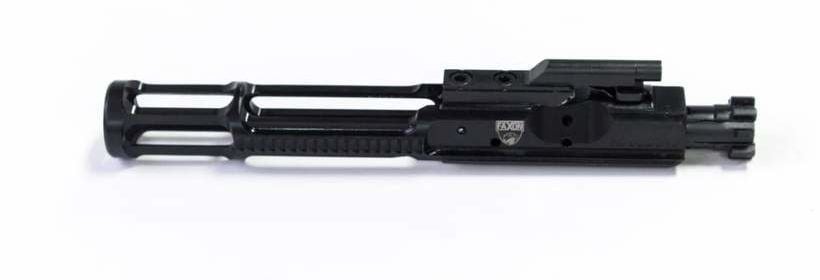
Black nitride is also referred to as salt bath nitride or QPQ. It is not technically a coating, but rather a treatment that hardens steel and makes it more resistant to corrosion. It also increases longevity and reduces friction.
Testing
Testing proves just how strong and durable a BCG can be. Bolt carrier groups are often submitted to different types of tests as a quality control measure. Here’s a short explanation of what each test entails.
Magnetic Particle Inspected
Magnetic particle inspection uses magnetism to detect any flaws on the surface (or slightly below the surface) of a BCG. Here’s how it works: the BCG is magnetized, and iron particles are placed on its surface. If there are any cracks, divots, or scratches, the particles will be drawn to them. The test has no adverse effects on the BCG and guarantees a flawless product. At our online shop, you can scroll down to the description of a BCG to find out whether it has been submitted to magnetic particle inspection.
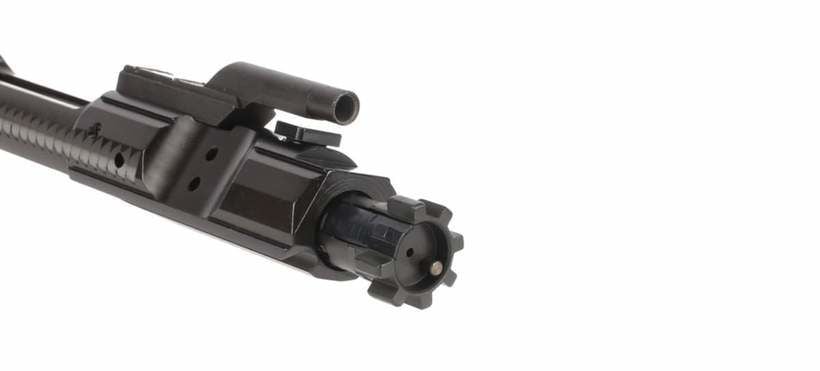
The Bear Creek Arsenal 6.5 Grendel Type II Bolt Carrier Group is one example of a BCG that undergoes this type of testing after the manufacturing process.
High Pressure Testing
High pressure testing does exactly what its name suggests: it submits the BCG to very high pressures to see if they can resist the pressure of a live round. Some believe that this type of testing is unnecessary and that it may shorten a BCG’s life span.


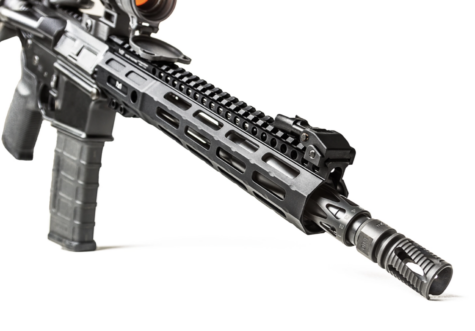
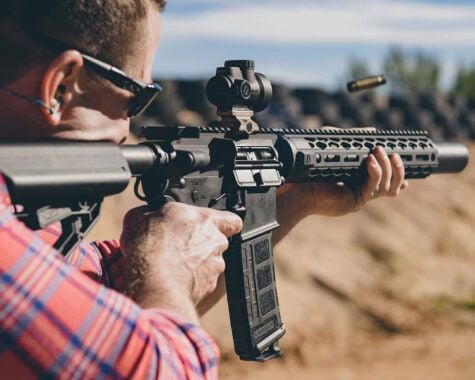

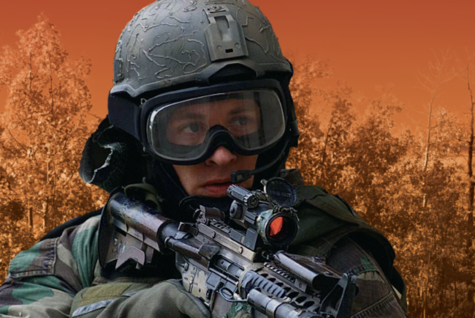
My father has always loved his guns and, with his birthday coming up, I thought it would be good to buy him a Bolt Carrier Group for his AR-15. Your information that titanium BCGs are both stronger and lighter than steel while also being heat and pressure resistant is wonderful. If both my brother and I pitch in, we should be able to get our father this upgrade.
Just purchase my first ar10 from aero I’m new to the whole ar thing and was looking for advice on upgrading my BCG. All my questions where answered in one page. Thanks